“I now understand Jack and the Beanstalk,” my husband said, looking out at our bushy green bean plants in the garden. I expanded our growing space this year with galvanized steel beds so we’re growing triple the amount of green beans as we have in the past. I typically plant French filet beans but for 2017, I went for Blue Lake 274 and they are prolific. Every three days, my husband goes outside and picks beans. When he comes inside, he’s holding a colander full of green beans. We parboil them and keep them in the fridge to eat as is or to stir-fry or add to other dishes.
After about three weeks of boiled green beans, I was feeling a little desperate for something new. Along came Chitra Agrawal’s Vibrant India cookbook and there was a interesting green bean dish. I didn’t care that it was gluten-free and vegan. I just needed a new green bean idea. After trimming back our slender curry leaf tree, it bushed out big time. And guess what? Chitra’s recipe used curry leaf for a South Indian flair. It was a win-win situation.
(Above are my husband's 3 pounds of green beans from our garden. I merely plucked the curry leaf branches. We had the dried coconut in the pantry, but you may buy it in the bulk foods section of a health food store.)
I did not have all of Chitra’s ingredients, first and foremost, the sambar (huli) spice blend. A couple weeks ago, I actually threw out a very old bag of it. In its stead, I used garam masala and added an extra dried chile and big pinch of turmeric. To further make up the deficit of sambar spice blend, I also quadrupled the curry leaf quantity since I have a sizeable quantity. In the original recipe headnote, Chitra says that the sambar addition is something her family adds for extra flavor. I interpreted that as permission to tinker or sub.
She also called for asefoetida (hing), which I kept around for many years too, but recently discarded the small white plastic container. It has a very strong aroma. As Chitra points out in an ingredient discussion, asefoetida is often employed as an onion and garlic sub (some people abstain from those aromatics). I added a crushed clove of garlic since I lacked hing. As for the coconut, it was simply a matter of getting some dried shredded coconut and rehydrating it in hot water for 5 minutes then draining and gently squeezing.
If you grow your own beans, you know they come in varying sizes when you pick them. For that reason, I sort them into small, medium, and large and cut them into long, medium, and short lengths, respectively, so they’ll cook evenly.
One of the things I liked about Chitra’s recipe is she has you adjust the heat so it moderately cooks the sputtering spices. She suggests covering the pan after adding the curry leaf. DO IT. Curry leaf, no matter how well I dry each leaf before adding them to the hot oil, spits like crazy.
There’s a flourish of cilantro at the end for garnish but the green beans taste great as is. The lemon juice adds just the right tangy burst to contrast and amplify the other ingredients.
If you do not have curry leaf, you’ll lack a certain South Indian imprint. You could instead add about ¼ cup chopped cilantro sprigs at the end for a pungent note, and omit the cilantro garnish (obviously). My friend Raghavan offers that kind of substitute in this kerala shrimp recipe, which would go really well with these green beans!
So make the green beans, shrimp and rice, and you’ll have a great coconut-ty, South Indian meal.
Recipe
Green Bean and Coconut Stir-Fry
Huralikayi Palya
Yield: 4 servings
Ingredients
- ¼ cup unsweetened grated coconut (fresh, frozen, or dried)
- 1 tablespoon mild-flavored oil such as canola
- ½ teaspoon black or brown mustard seeds
- Pinch of asafetida (hing) powder, or 1 clove garlic, crushed
- 4 or 5 fresh curry leaves if using sambar, 2 branches of curry leaf if not using sambar
- 1 dried red chile, broken in half
- 1 pound green (string) beans, trimmed and cut into 1⁄4-inch pieces
- ¼ teaspoon turmeric powder
- ¾ teaspoon fine sea salt
- 1 teaspoon huli powder (recipe follows) or store-bought sambar powder, or ¾ teaspoon garam masala plus 1 big pinch turmeric (add 1 extra dried chile at the front end, too!)
- 1 tablespoon freshly squeezed lemon juice, plus more as needed
- Chopped cilantro leaves, for garnish (optional)
Method
- Thaw frozen coconut. Or, place dried coconut in bowl, add just-boiled water to cover then let rehydrate for 5 minutes, until plump and soft; drain and gently squeeze to expel excess moisture.
- Put the oil in a wok or large frying pan over medium heat. When the oil is hot and shimmering, add one black mustard seed. When the seed sizzles and pops, add the rest of the mustard seeds and the asafetida (or garlic). Keep a lid handy to cover the pan while the mustard seeds are popping. When the popping starts to subside (a few seconds), turn the heat to medium-low.
- Rub the curry leaves between your fingers a little to release their natural oils, and drop them and the dried red chile into the oil. Cover immediately, as moisture from the curry leaves will cause the oil to spatter. Then stir to evenly coat everything with oil, a few seconds.
- Add the green beans and turmeric powder to the pan and mix well. Mix in the salt and raise the heat to medium. Stir-fry for a minute, or until things start to sizzle. Then add a couple tablespoons of water. Slightly lower the heat to gently simmer 4 to 5 minutes, until the beans are just cooked through. Mix in the huli powder (or garam masala and turmeric) and cook for 2 minutes more. Stir in the coconut and cook everything for another minute. Turn off the heat. Mix in the lemon juice. Taste for lemon juice and salt and adjust if needed. Garnish with chopped cilantro, if using, before serving.
Adapted from Chitra Agrawal’s Vibrant India (Ten Speed Press, 2017)
I did not make the huli (sambar) powder but here is Chitra’s recipe for you to try:
HULI (OR SAMBAR) POWDER
Huli Pudi
Chitra writes: “I prefer using Byadgi chiles, which are available at Indian shops and online, because they have a subtle spiciness and their deep red color provides a nice hue to the powder. You can also use a combination of dried red and Byadgi chiles. It’s best to err on the side of less chile because you can always roast and grind more to add to your powder if you want more heat.”
She also notes: “You can omit the curry leaves and coconut, and instead add them when making the huli, to give this powder a longer shelf life.”
Yield: 3 cups
Ingredients
- ¾ cup chana dal
- ½ teaspoon urad dal
- About 1 ½ teaspoons mild-flavored oil such as canola
- 2 cups coriander seeds
- 60 dried red chiles or 90 dried Byadgi chiles, stems removed
- 4 (3-inch) cinnamon sticks
- 1 ½ teaspoons fenugreek seeds
- 1 cup fresh curry leaves, loosely packed (optional)
- ½ cup dried unsweetened shredded coconut (optional)
- 1 ½ teaspoons turmeric powder
Method
- Put a cast-iron frying pan or other heavy pan over medium-low heat. When hot, add the chana dal and dry-roast, stirring it all the while, until it turns a reddish golden brown and has a nutty aroma. This may take several minutes, so be patient. Transfer to a plate to cool. Next add the urad dal to the pan. Dry-roast the urad dal, stirring it all the while, until it turns a reddish golden brown and has a nutty aroma. Transfer to the plate with the chana dal to cool.
- The next group of spices each needs to be fried separately in a bit of oil. It takes patience, but this step is important because each spice takes a different amount of time to roast. Add 1⁄2 teaspoon of the oil to the pan. Add the coriander seeds. Roast and stir continuously until they are fragrant. Be watchful that the seeds do not burn. Transfer to a plate to cool.
- Add another ¼ teaspoon oil to the pan. Add the dried red chiles. Stir and fry them until they warm up and become fragrant and your nose starts to tickle. Transfer to the plate to cool.
- Add ⅛ teaspoon of the oil to the pan and add the cinnamon sticks. Stir and fry until fragrant. Transfer to the plate to cool.
- Add ⅛ teaspoon of the oil to the pan and add the fenugreek seeds. Stir and fry until they turn golden brown and have a nutty aroma. Transfer to the plate to cool.
- Add the remaining 1⁄8 teaspoon of oil to the pan and add the curry leaves, if using. Roast the leaves, stirring them the entire time, until they have dried and start to curl up. Transfer to the plate to cool.
- Add the coconut, if using, to the pan. Stir it until it just warms up and becomes fragrant. Transfer it to the plate to cool.
- Grind the cooled spices, curry leaves, and coconut to a powder in a spice grinder or powerful blender. This powder is not as fine as rasam powder and will be somewhat coarse. Mix in the turmeric powder.
- Store in an airtight container or glass jar. It will keep for several months at room temperature, and longer if stored in the refrigerator.
From Chitra Agrawal’s Vibrant India (Ten Speed Press, 2017)
Related posts:
Pho in the News: In case you missed these, the Press Herald tackled one of the pressure cooker pho recipes and Munchies.com invited me to their kitchen to make rotisserie chicken pho from The Pho Cookbook!













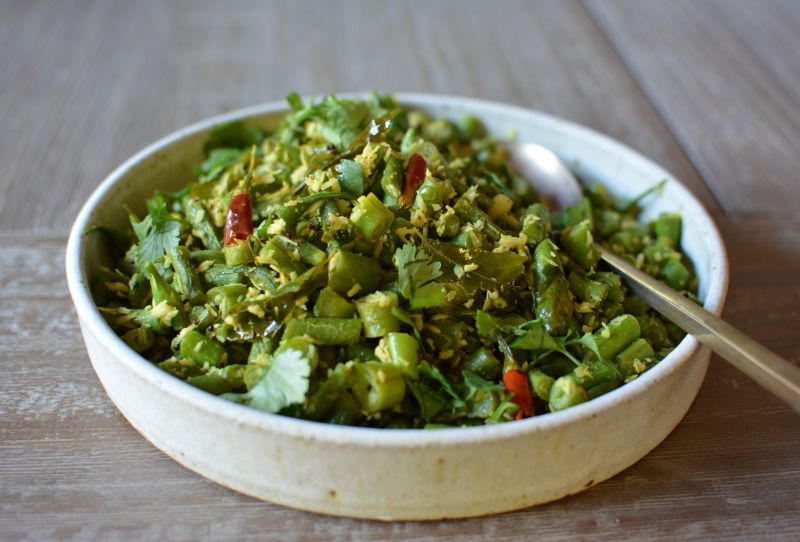
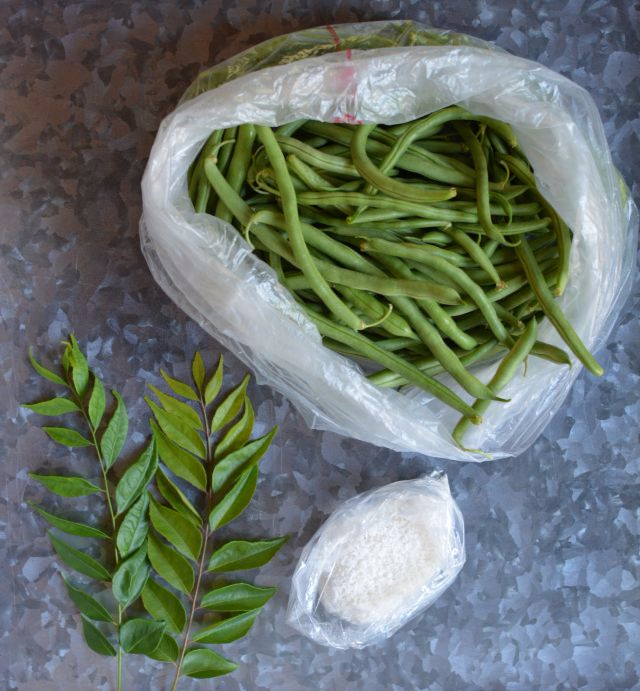
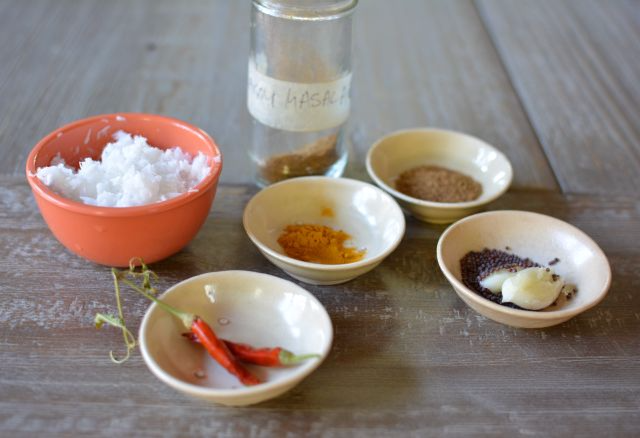
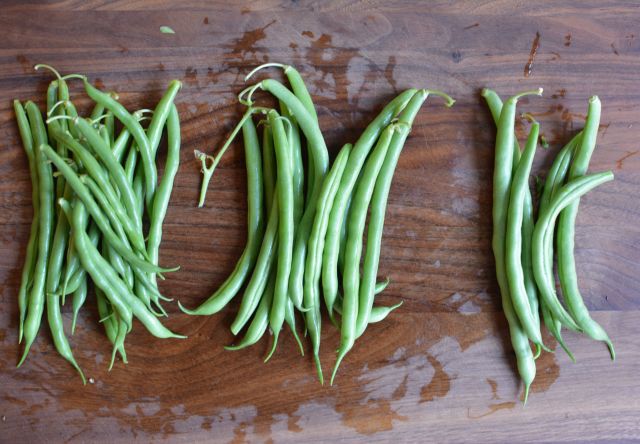
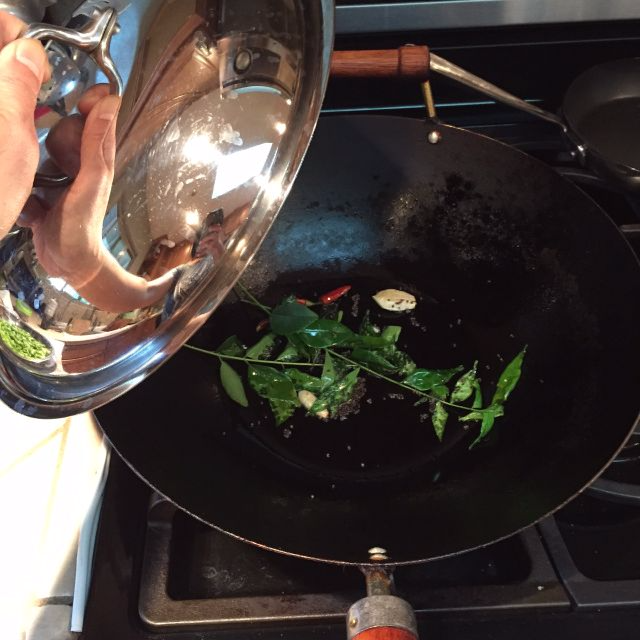




Yng says
Andrea, where can I find curry leaf plant? I live in San Francisco, but haven't seek it out actively yet.
Andrea Nguyen says
I bought mine at a Bharat Bazaar in Santa Clara. It's now closed. Try India Cash and Carry on El Camino Real in Santa Clara:
http://www.indiacashandcarry.com/
https://www.yelp.com/biz/india-cash-and-carry-sunnyvale
If they don't have it, ask the clerks.
chris 06 says
Merci pour cette recette qui me plait bien